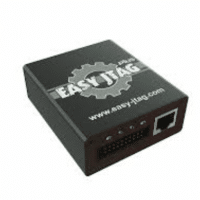In this post, we have shared the latest USB driver of Easy JTAG and Easy JTAG Plus. A driver is a software tool that helps you to do a lot of things with your computer. You can use it to install drivers, support Jtag and NAND, and even upgrade to the latest versions.
Table of Contents
How to install
The Easy JTAG Driver For Windows is a powerful tool that can be used for many purposes, including flashing mobile phones, flashing BIOS images on routers, unlocking phone bootloaders, repairing IMEI and NV data, and more. It can be installed using the following steps.
First, download and install the Windows Driver Kit (WDK) from the Windows store. If you’re not a fan of installing software from the Microsoft store, you can also use WinRAR or a third-party application to install the software.
After installing the WDK, go to the Windows Dev Center – Hardware to find out if you’ve got digitally signed catalog files. This will let you install drivers containing the correct signature.
App Details
App Name: Easy JTAG Plus Driver
Platform: Windows
File Size: 5.8 MB
Finally, install the ST-LINK USB driver if you’re working with an ST-LINK/V2 board. You’ll need to do this before connecting your device.
Another important part of the Easy JTAG driver is the eMMC tool, which can help you unlock your phone’s screen lock and remove the factory reset protection. In addition, the eMMC suite includes a tutorial to guide you through the process.
While the Easy JTAG driver isn’t the most comprehensive software package, it does come with the aforementioned eMMC and a more sophisticated tool that can be used to test the eMMC chip and flash it.
Supporting NAND and Jtag
Z3X Easy JTAG Plus Smart Card Driver for Windows is a PC software program that is suitable for 32-bit and 64-bit operating systems. It supports NAND and JTAG memory devices.
This driver is capable of writing to any page of any NAND flash device. The driver is optimized to minimize RAM usage and increase data reliability. Moreover, it supports a large number of NAND flash devices.
For example, if there is a bit of error in a block, the driver will mark the entire block as invalid. After detecting the error, the driver will copy the block to a non-defective block. In this way, the driver will try to recover the original data.
Easy Jtag supports JTAG, ISP, and UFS. EMMC is also supported. These features make it easy to repair or restore the data in your device.
Easy Jtag is one of the fastest memory programmers on the market. Easy Jtag is compatible with almost all PCs.
EasyJet Plus adds a new UFS high-performance core to its suite of features. The core is capable of supporting Multi-Level Cell NAND flash devices and larger page sizes. Additionally, the driver makes effective use of RAM.
As for compatibility, the Universal NAND driver is supported by almost all popular NAND flash devices. It provides excellent data reliability and is fail-safe by design.
How to update
If you are having problems with your Easy JTAG Driver for Windows, you may want to upgrade to the latest version. This will help you to get a more reliable JTAG connection.
The easiest way to upgrade to the latest version is to download the driver from a trusted source. Make sure the driver is digitally signed and install it. Next, you will need to update your CCS to the latest release. Once you have done that, you can finally upgrade to the latest Easy JTAG Driver for Windows.
When you are having trouble with your JTAG connection, you will find that the JTAG TCLK frequency will vary. You can fix this by changing the JTAG TCLK frequency to Adaptive with a user-specified limit.
You can also use the Test Connection button to test the connection. Depending on your system, you may receive different results.
Some of the troubleshooting tips include testing the device in a different host, using a power cycling board, or adjusting the JTAG settings. You may need to change the target configuration file to accurately describe the JTAG probe and the target.
The root cause of the error can be a problem with the firmware or the runtime of the core program. It could occur immediately after the program loads or it could take some time to manifest.

